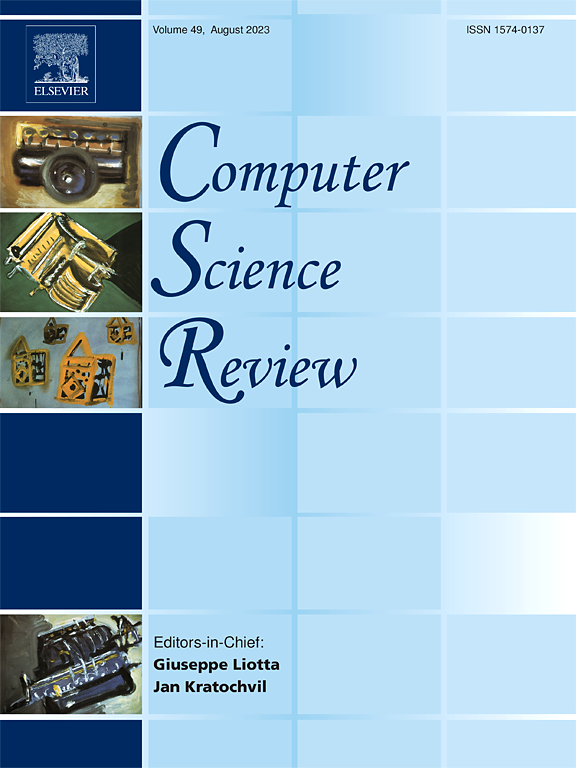数据中心网络中的路由优化策略综述
IF 12.7
1区 计算机科学
Q1 COMPUTER SCIENCE, INFORMATION SYSTEMS
引用次数: 0
摘要
作为云计算和分布式计算基础设施的重要组成部分,优化数据中心网络的路由策略是保证高带宽、低延迟、高可靠性和高能效的关键。然而,传统的路由策略在处理动态流量模式、跨域传输和日益增长的绿色计算需求方面面临着重大挑战,需要进行系统分析和创新优化。本文对现有路由策略进行了全面的回顾和分类,解决了当前研究在dcn内和dcn间环境的适用性和系统比较方面的差距。值得注意的是,dcn内部和dcn之间在架构特征、操作需求和功能目标方面存在显著差异,这就需要为每个域量身定制路由策略。提出了一种新的路由策略分类框架。对于内部dcn,我们从六个方面考察了核心策略:负载优化、流量调度、拥塞控制、智能优化、容错和能源效率。对于dcn间的路由策略,分析的重点是负载均衡、流量调度、容错、能效和智能优化。通过比较分析,本文强调了现有策略的优势和局限性,为研究人员提供了一个全面的框架来推进这一领域。展望了未来的研究方向。本文的贡献在于为学术界和产业界的路由策略设计提供理论支持和实践指导,推动高效、低时延数据传输技术的发展,指导5G、边缘计算等新兴场景下的DCNs优化。本文章由计算机程序翻译,如有差异,请以英文原文为准。
Routing optimization strategies in data center networks: A survey
As a critical component of cloud and distributed computing infrastructures, optimizing routing strategies in Data Center Networks (DCNs) is crucial for ensuring high bandwidth, low latency, high reliability, and energy efficiency. However, traditional routing policies encounter significant challenges in addressing dynamic traffic patterns, cross-domain transmissions, and the increasing demands for green computing, necessitating systematic analysis and innovative optimization. This paper presents a comprehensive review and classification of existing routing strategies, addressing the gap in current research regarding the applicability and systematic comparison between intra-DCN and inter-DCN environments. Notably, intra-DCNs and inter-DCNs differ significantly in their architectural characteristics, operational requirements, and functional objectives, which necessitates tailored routing strategies for each domain. We proposed a novel framework for classifying routing policies. For intra-DCNs, we examined core policies across six dimensions: load optimization, traffic scheduling, congestion control, intelligent optimization, fault-tolerant, and energy efficiency. For inter-DCNs, the analysis covers routing strategies focused on load balancing, traffic scheduling, fault-tolerant, energy efficiency, and intelligent optimization. Through comparative analysis, this paper underscores the strengths and limitations of existing strategies, providing researchers with a comprehensive framework for advancing this field. Additionally, we outlined future research directions. The contribution of this paper lies in offering theoretical support and practical guidance for routing strategy design in both academia and industry, promoting the development of efficient, low-latency data transmission technologies, and guiding DCNs optimization in emerging scenarios such as 5G and edge computing.
求助全文
通过发布文献求助,成功后即可免费获取论文全文。
去求助
来源期刊

Computer Science Review
Computer Science-General Computer Science
CiteScore
32.70
自引率
0.00%
发文量
26
审稿时长
51 days
期刊介绍:
Computer Science Review, a publication dedicated to research surveys and expository overviews of open problems in computer science, targets a broad audience within the field seeking comprehensive insights into the latest developments. The journal welcomes articles from various fields as long as their content impacts the advancement of computer science. In particular, articles that review the application of well-known Computer Science methods to other areas are in scope only if these articles advance the fundamental understanding of those methods.
 求助内容:
求助内容: 应助结果提醒方式:
应助结果提醒方式:


